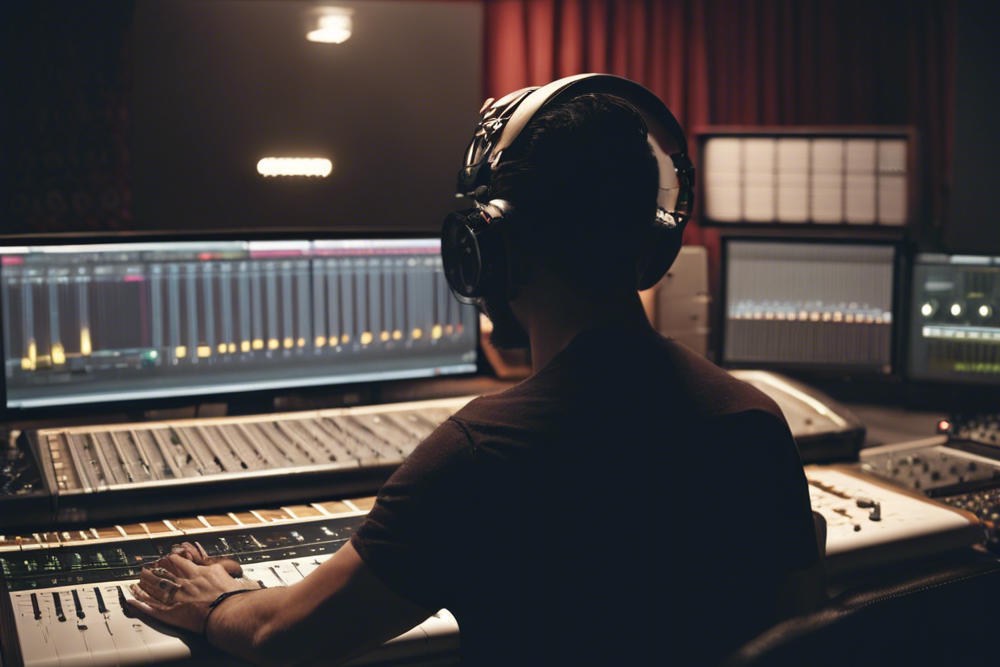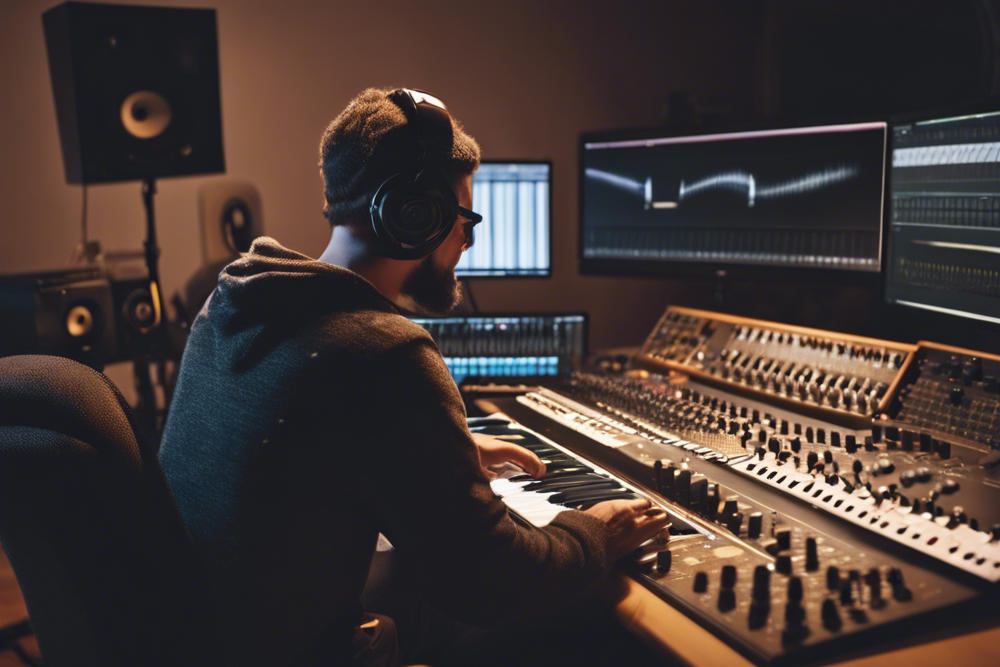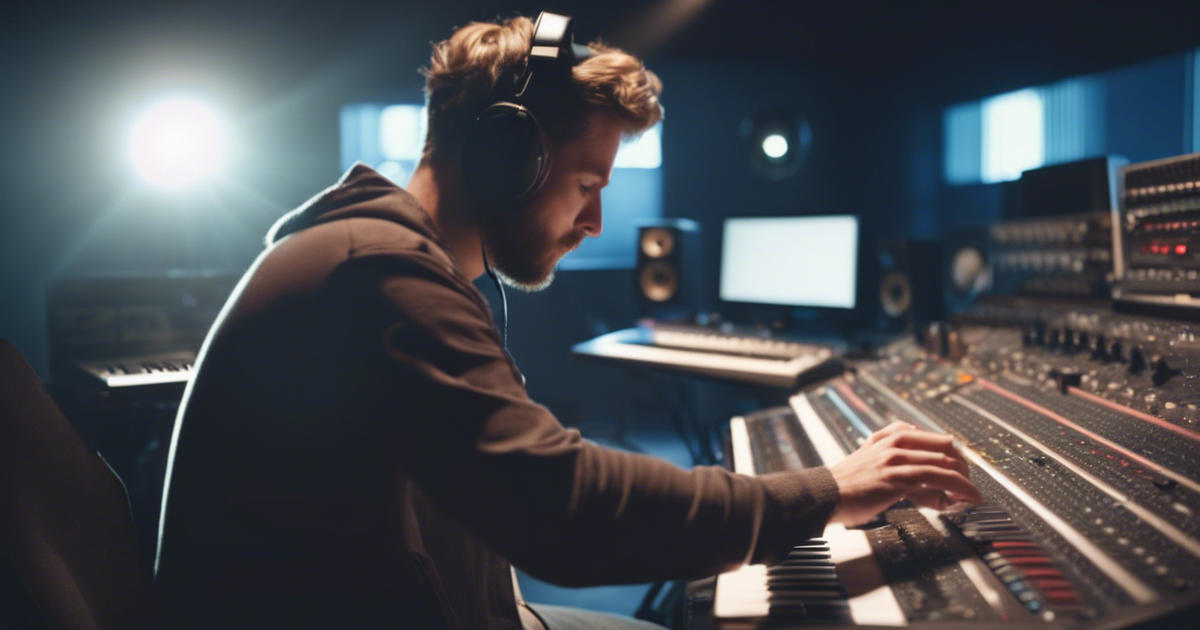Estimated reading time: 9 minutes
Introduction: Embarking on Your Musical Journey
Have you ever found yourself tapping your foot to a catchy beat or humming along to a melody that just won’t leave your head? That’s the magic of music, and guess what? You have the power to create that magic yourself. Whether you’re a complete novice or someone who’s been dabbling in music for a while, this comprehensive guide will walk you through the process of how to make music from scratch. We’ll cover everything from understanding basic music theory to using virtual instruments and setting up your home recording studio. So, let’s dive in and start your journey to becoming a music producer!
Table of contents
- Introduction: Embarking on Your Musical Journey
- Understanding the Basics: Music Theory 101
- Setting Up Your Home Studio
- Creating Your First Track
- Mixing Your Track
- Mastering Your Track
- Developing Your Skills as a Music Producer
- Video: How to get started making music
- Conclusion: Your Music Production Journey Begins
- FAQs
Understanding the Basics: Music Theory 101
The Building Blocks of Music
Before we jump into the technical aspects of music production, it’s crucial to understand the fundamental elements that make up a piece of music. These building blocks are:
- Melody
- Harmony
- Rhythm
- Timbre
Let’s break these down one by one.
Melody: The Heart of Your Song
Melody is often described as the “tune” of a song – it’s the part you find yourself humming or singing along to. Creating effective melodies is a skill that takes practice, but here are some tips to get you started:
- Start simple: Use a limited range of notes
- Create a memorable hook
- Use repetition and variation
- Experiment with different scales (major, minor, pentatonic)
Harmony: Adding Depth to Your Music
Harmony is what gives your music its richness and depth. It’s created when two or more notes are played together. Understanding chord progressions is key to creating harmony in your music. Some popular chord progressions include:
- I-V-vi-IV (C-G-Am-F in the key of C)
- ii-V-I (Dm-G-C in the key of C)
- I-IV-V (C-F-G in the key of C)
Experiment with these progressions and see how they can transform your melodies.
Rhythm: The Pulse of Your Track
Rhythm is what makes people want to move to your music. It’s the pattern of beats and accents in a piece of music. To create interesting rhythms:
- Experiment with different time signatures (4/4, 3/4, 6/8)
- Use syncopation (placing accents on off-beats)
- Incorporate polyrhythms (two or more conflicting rhythms played simultaneously)
Timbre: The Color of Sound
Timbre is what makes a trumpet sound different from a violin, even when they’re playing the same note. In music production, you’ll be working with various timbres through your choice of instruments and sound design.

Setting Up Your Home Studio
Now that we’ve covered the basics of music theory, let’s talk about the tools you’ll need to start making music.
Essential Equipment for Music Production
- Computer: This will be the heart of your home studio. Both PCs and Macs are suitable for music production.
- Digital Audio Workstation (DAW): This is the software you’ll use to record, edit, and produce your music. Popular options include FL Studio, Ableton Live, and Logic Pro X.
- Audio Interface: This device connects your instruments and microphones to your computer. It converts analog signals to digital ones that your computer can process.
- MIDI Controller: A MIDI keyboard or pad controller allows you to play and record virtual instruments.
- Headphones and Monitors: For listening to your music accurately during production and mixing.
- Microphone: If you plan to record vocals or acoustic instruments.
Choosing the Right DAW
Your choice of DAW can significantly impact your workflow. Here’s a brief overview of some popular options:
- FL Studio: Known for its intuitive interface and beat-making capabilities.
- Ableton Live: Popular for electronic music production and live performances.
- Logic Pro X: A comprehensive DAW exclusive to Mac users.
- Pro Tools: Industry standard for professional recording studios.
Try out demo versions of different DAWs to see which one feels most comfortable for you.
Creating Your First Track
Now that you have your studio set up, let’s walk through the process of creating your first track.
Step 1: Start with a Beat
Many producers start by creating a beat. Here’s how you can do it:
- Open your DAW and create a new project.
- Choose a tempo (beats per minute or BPM) for your track.
- Use drum samples or a virtual drum machine to create a basic beat.
- Start with a simple pattern: kick on the 1 and 3, snare on the 2 and 4.
- Add hi-hats and other percussion to flesh out your rhythm.
Step 2: Add a Bass Line
The bass line provides the foundation for your harmony:
- Choose a bass sound (either a virtual instrument or a sampled bass).
- Create a simple pattern that complements your beat.
- Focus on the root notes of your chord progression.
Step 3: Develop Your Chord Progression
Now it’s time to add some harmony:
- Choose a virtual instrument for your chords (piano, synth pad, or guitar).
- Decide on a chord progression (remember those we discussed earlier).
- Play or program your chords to match your beat and bass line.

Step 4: Create a Melody
With your harmonic foundation in place, you can now create a melody:
- Choose a lead instrument sound.
- Experiment with different note patterns that fit your chord progression.
- Remember to use repetition and variation to make your melody catchy and memorable.
Step 5: Add Supporting Elements
To fill out your track, consider adding:
- Counter-melodies
- Arpeggios
- Ambient sounds or textures
- Sound effects
Step 6: Arrange Your Track
Arranging is where you decide the structure of your song:
- Intro
- Verse
- Chorus
- Bridge
- Outro
Consider how elements will be introduced, developed, and removed throughout the track to create interest and flow.
Mixing Your Track
Mixing is the process of balancing and enhancing the different elements of your track. Here are some key aspects of mixing:
Volume Balance
Adjust the volume levels of each track to create a balanced mix. Generally, the kick drum and bass should be prominent, with other elements sitting around them.
Panning
Use panning to place sounds in the stereo field. This creates width and space in your mix.
EQ (Equalization)
Use EQ to shape the frequency content of each sound. This helps each element find its place in the mix without conflicting with others.
Compression
Compression helps control the dynamic range of your sounds, making them more consistent and punchy.
Effects
Add depth and interest to your mix with effects like reverb, delay, and modulation.
Mastering Your Track
Mastering is the final stage of music production. It prepares your track for distribution by:
- Balancing the overall frequency spectrum
- Adjusting the overall volume
- Creating consistency across different playback systems
While professional mastering is often done by specialists, many DAWs include basic mastering tools for you to experiment with. For Ableton users, please check more infos in this Ableton Mastering Tutorial.
Developing Your Skills as a Music Producer
Becoming a skilled music producer is a lifelong journey. Here are some tips to help you continue improving:
- Listen critically to your favorite songs. Try to deconstruct how they were made.
- Experiment with different genres and styles of music.
- Collaborate with other musicians and producers.
- Learn to play a physical instrument. This can greatly enhance your understanding of music.
- Study music theory in more depth.
- Practice, practice, practice! The more music you make, the better you’ll become.
Video: How to get started making music
Conclusion: Your Music Production Journey Begins
Making music is an incredibly rewarding experience. It allows you to express yourself creatively, tell stories, and connect with people on an emotional level. Remember, every great producer started as a beginner. The key is to stay curious, keep learning, and most importantly, enjoy the process.
Whether you’re creating electronic beats, recording a rock band, or composing orchestral pieces, the principles we’ve discussed in this guide will serve as a solid foundation. From understanding basic music theory to setting up your home studio and creating your first track, you now have the knowledge to start your music production journey.
So, fire up your DAW, experiment with virtual instruments, play with chord progressions, and start creating. Who knows? Your next track could be the start of something big. Happy producing!
“Music production is not just about the technical aspects. It’s about capturing emotions, telling stories, and creating experiences through sound. Keep this in mind as you embark on your music-making journey.” – Every Successful Music Producer Ever
Remember, the world of music production is vast and ever-evolving. Stay curious, keep learning, and most importantly, have fun making music!
Related Posts
FAQs
The basic elements of music include melody, harmony, rhythm, and timbre. Melody is the tune of the song, harmony adds depth with chord progressions, rhythm provides the beat, and timbre is the unique color or quality of the sound produced by different instruments.
To set up a home music studio, you will need a computer (PC or Mac), a Digital Audio Workstation (DAW) software, an audio interface, a MIDI controller, headphones, monitors, and a microphone if you plan to record vocals or acoustic instruments.
Choosing the right DAW depends on your needs and preferences. Popular options include FL Studio for beat-making, Ableton Live for electronic music and live performances, Logic Pro X for a comprehensive suite (exclusive to Mac), and Pro Tools, which is the industry standard for professional studios. It’s advisable to try demo versions of different DAWs to find which one you are most comfortable with.
The steps to creating your first track include:
1. Starting with a beat by choosing a tempo and creating a basic pattern.
2. Adding a bass line that complements your beat.
3. Developing a chord progression.
4. Creating a melody that fits your chord progression.
5. Adding supporting elements like counter-melodies, arpeggios, and ambient sounds.
6. Arranging your track into sections like intro, verse, chorus, and outro.
To improve as a music producer, listen critically to your favorite songs and try to deconstruct them, experiment with different genres, collaborate with other musicians, learn to play a physical instrument, study music theory in depth, and practice regularly. Consistent practice and staying curious about new techniques and styles are key to growth in music production.
